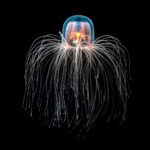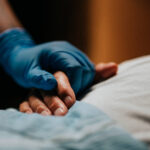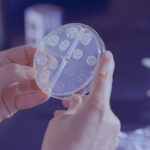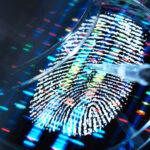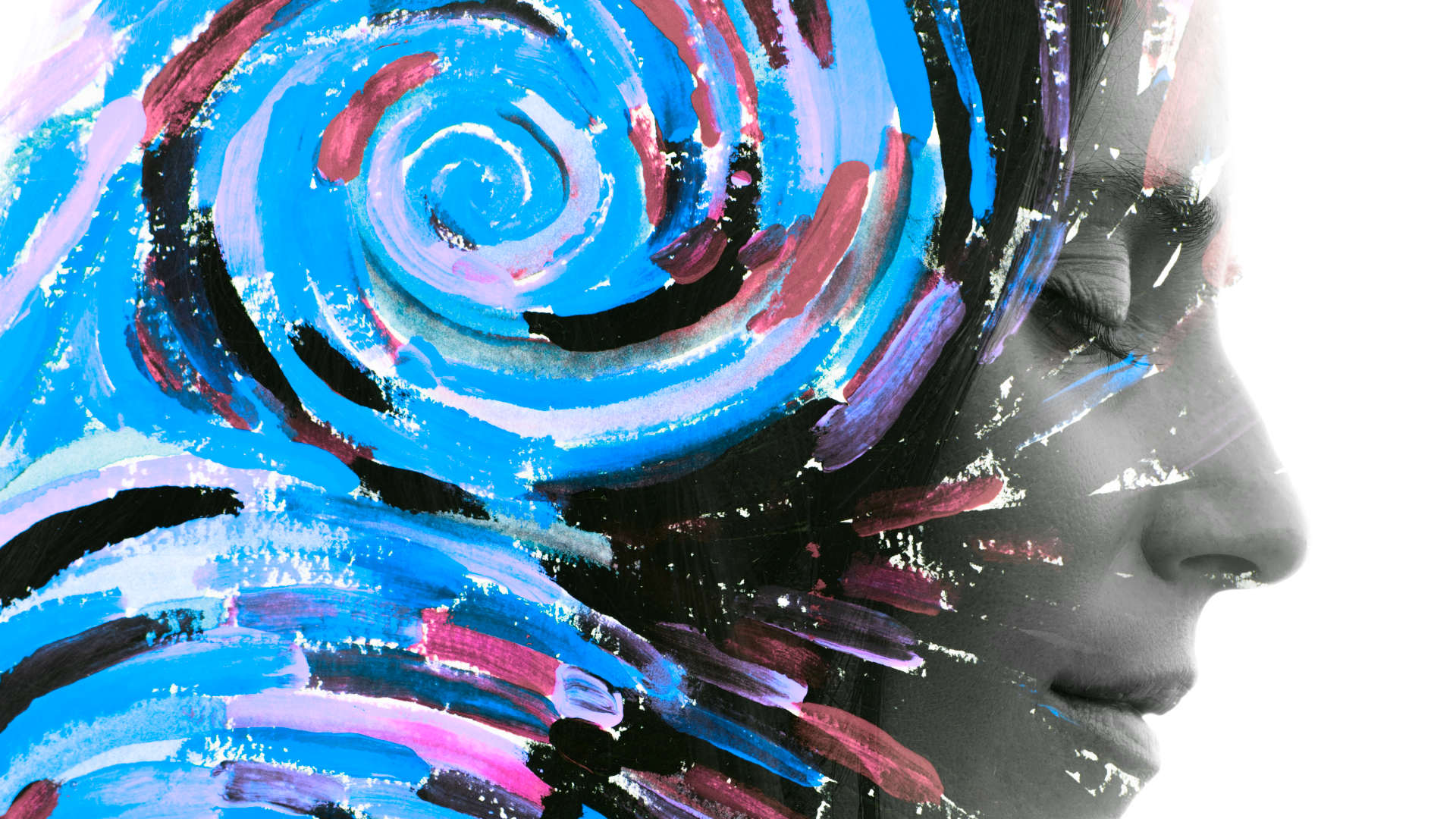Six years ago, while shopping at a supermarket, Sadie Dingfelder spied her husband selecting a store-branded peanut butter jar. “Since when do you buy generic?” she asked, grabbing the jar from the cart. To her surprise, the frightened man turned out to be a total stranger.
As usual, Dingfelder quickly began rewriting the unsettling interaction in her mind as a funny story, but a stark thought struck her this time: “Other people do not make this kind of mistake.”
Dingfelder, a freelance science journalist, has prosopagnosia, or face blindness. It’s extremely difficult for her to recognize faces: She has gotten into cars with the wrong people; she has made plans with friends and then been surprised by who came. She once had to ask filmmaker John Waters, who met her at a museum for an interview, to help identify the museum staffer who had just introduced them — she couldn’t pick her out from a crowd of his fans.
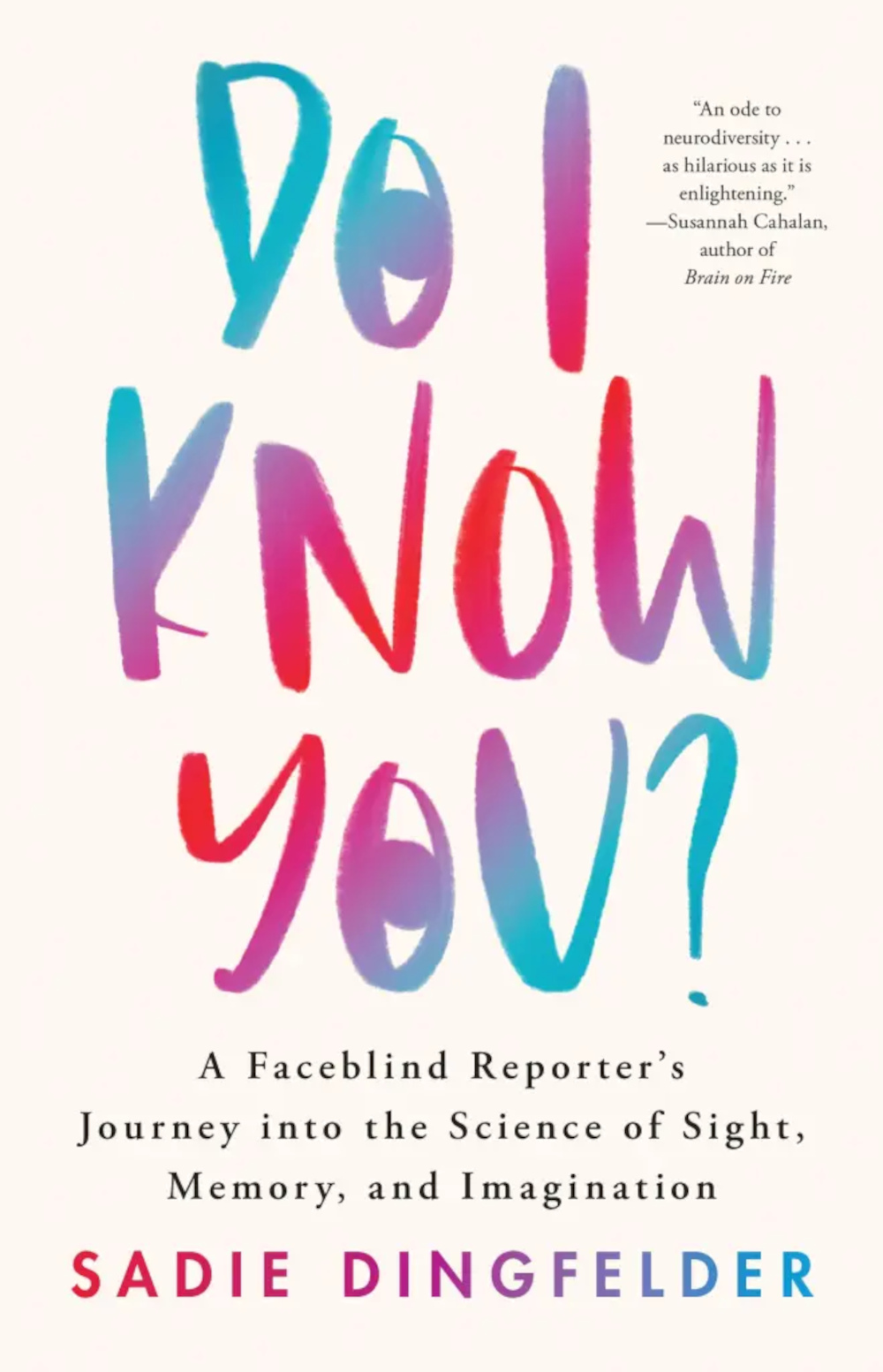
BOOK REVIEW — “Do I Know You? A Faceblind Reporter’s Journey into the Science of Sight, Memory, and Imagination,” by Sadie Dingfelder (Little, Brown and Company, 304 pages).
In “Do I Know You? A Faceblind Reporter’s Journey Into the Science of Sight, Memory, and Imagination,” Dingfelder begins coming to terms with her neurodivergence, weaving together science reporting — including brain scans, computerized tests, and assessments by medical researchers — and personal memoir in order to understand herself better. Ultimately, “Do I Know You?” is a question Dingfelder seems to be asking herself. By the end of the book, the answer feels like a firm yes.
The term prosopagnosia, a portmanteau of the Greek words for “face” and “not knowing,” was coined by Joachim Bodamer, a psychiatrist and neurologist in Nazi Germany. Bodamer had encountered German soldiers with head traumas who had lost the ability to recognize people, including one soldier who blithely passed by his own mother at a train station.
Today, scientists estimate that approximately 6 million Americans have face blindness. Some people develop it after traumatic brain damage. But many others, including Dingfelder, have developmental prosopagnosia; their brains never developed typical facial recognition skills. Scientists don’t entirely know what causes the condition, and there is no effective treatment.
There are degrees of face blindness; Dingfelder’s is fairly extreme. In fact, Harvard neuroscientist Joe DeGutis tells Dingfelder that she has the facial recognition ability of “maybe like a mediocre or below-average macaque.”
All of which begs a question that Dingfelder herself wonders: How could she possibly write a memoir, not to mention work as a journalist? “A face blind reporter?” she muses. “It sounds like a punchline.”
Scientists estimate that approximately 6 million Americans have face blindness, many of whose brains never developed typical facial recognition skills.
Dingfelder’s practical answer is in habits she’s developed over decades, using notes, photos, and other reminders to assist her memory. Prosopagnosia “has given me loads of practice walking into situations where I don’t know what’s going on and trusting that if I pay close attention and ask the right questions, I’ll figure it out,” she writes. “This is basically the job description for being a reporter.”
Her compensatory soft skills have also helped her professionally: She treats everyone she meets as though they might be a friend she hasn’t recognized, spurring close conversations quickly.
A deeper answer, however, emerges as she learns to confront, accept, and perhaps even celebrate the fact that her conscious experience of the world is fundamentally unlike other people’s.
Dingfelder only realized that she was neurodivergent in her early 40s, an experience she first described in a poignant 2019 essay in The Washington Post Magazine. While doing reporting for this book, she also learns that she doesn’t see in three dimensions and can’t conjure mental images, nor can she remember scenes from her life much beyond the very recent past. And those are just some of the unusual ways in which her brain works.
“A face blind reporter? It sounds like a punchline.”
Dingfelder developed coping strategies long before she reached her 40s. Some are simple: Because she lacks depth perception, she avoided learning to drive for many years (she managed to bluff her way into a driver’s license as a teenager without completing a driving test, in a scene certain to horrify parents of newly licensed drivers). Others are more complicated, such as prompting college friends who stopped by her dorm room to talk about themselves so much that they didn’t seem to notice she wasn’t entirely sure who they were.
By the time Dingfelder investigates her brain’s inner workings, alarmed by experiences such as the grocery-store incident, she is already an expert at creatively navigating whatever situations presents themselves: Once, when she forgets the name of a longtime friend’s husband, she sneaks a glance at an unopened envelope in their apartment to remind herself.
Nonetheless, she is surprised to discover how differently her mind works from other people’s. Her memoir is as much a journey of personal acceptance as medical adventure. Along the way, she reappraises how she thinks about the world — and herself.
Luckily, it’s not a journey she had to embark upon alone. In the message-board, instant-messaging digital ecosystem of the late ‘90s and early 2000s , people who suspected their own divergence from the neurological norm found community and connection. Their questions in turn led doctors to investigate rare neurological conditions. Meanwhile, activists fought, and continue to fight, for a non-judgmental understanding of neurodiversity. “Pioneered by the Autistic and ADHD communities, neurodivergent activists argue that neurodevelopmental ‘disorders’ should be seen as differences that confer strengths as well as weaknesses,” Dingfelder writes. Because no two minds are alike, scholars like Nick Walker contend, we all fall under the umbrella of neurodiversity. Neurotypical refers to a culturally accepted idea of typical, not an objective one.
Support Undark Magazine
Undark is a non-profit, editorially independent magazine covering the complicated and often fractious intersection of science and society. If you would like to help support our journalism, please consider making a donation. All proceeds go directly to Undark’s editorial fund.
Still, Dingfelder’s growing self-discovery sometimes leads to ambivalence. For example, she finds out she also has Severely Deficient Autobiographical Memory, or SDAM: She does not remember episodes in her life for very long. She realizes this may be why she developed the habit of taking notes frequently throughout her day-to-day life, collating individual moments into stories with narrative arcs that she can later remember. But she also knows that without memory of some kind, whether sensory, scene-based or emotional, a person can become lost. “Memory is the foundation of your personality and your identity,” she writes. “Memories allow us to reflect on the past and gain wisdom from mistakes. There’s also evidence that without memory, we are unable to imagine the future.”
Eventually, she recognizes how her way of telling stories — as comedies that play down real moments of struggle — has been a form of self-protection. Indeed, the most vulnerable moments of the book generally end on upbeat notes of humor that smooth the surface of deeply roiling waters. “This is perhaps why, for decades, I failed to see the throughline of my many zany adventures,” she writes. “My oversimplified stories blinkered me to a major truth about myself — that I am, emphatically, not neurotypical.”
As she starts to unmask herself to the people around her, Dingfelder finds that her friends know her better than she realized. On a trip to Boston, she makes plans with beloved college friends, despite her anxiety about how little she remembers them. Over dinner, she confesses to “Red” Ann and “Brown” Ann (whom she differentiates by hair color) that she doesn’t know basic facts about them — the names of their kids, their jobs, where they live. The Anns, though, don’t mind: they expect her sieve-like memory.
Later, Dingfelder forgives herself for failing to take notes during the get-together. “Self-acceptance;” she writes. “What a novel idea.”
Maya L. Kapoor is a science and environmental journalist based in California. Read more of her work at mayalkapoor.com.


